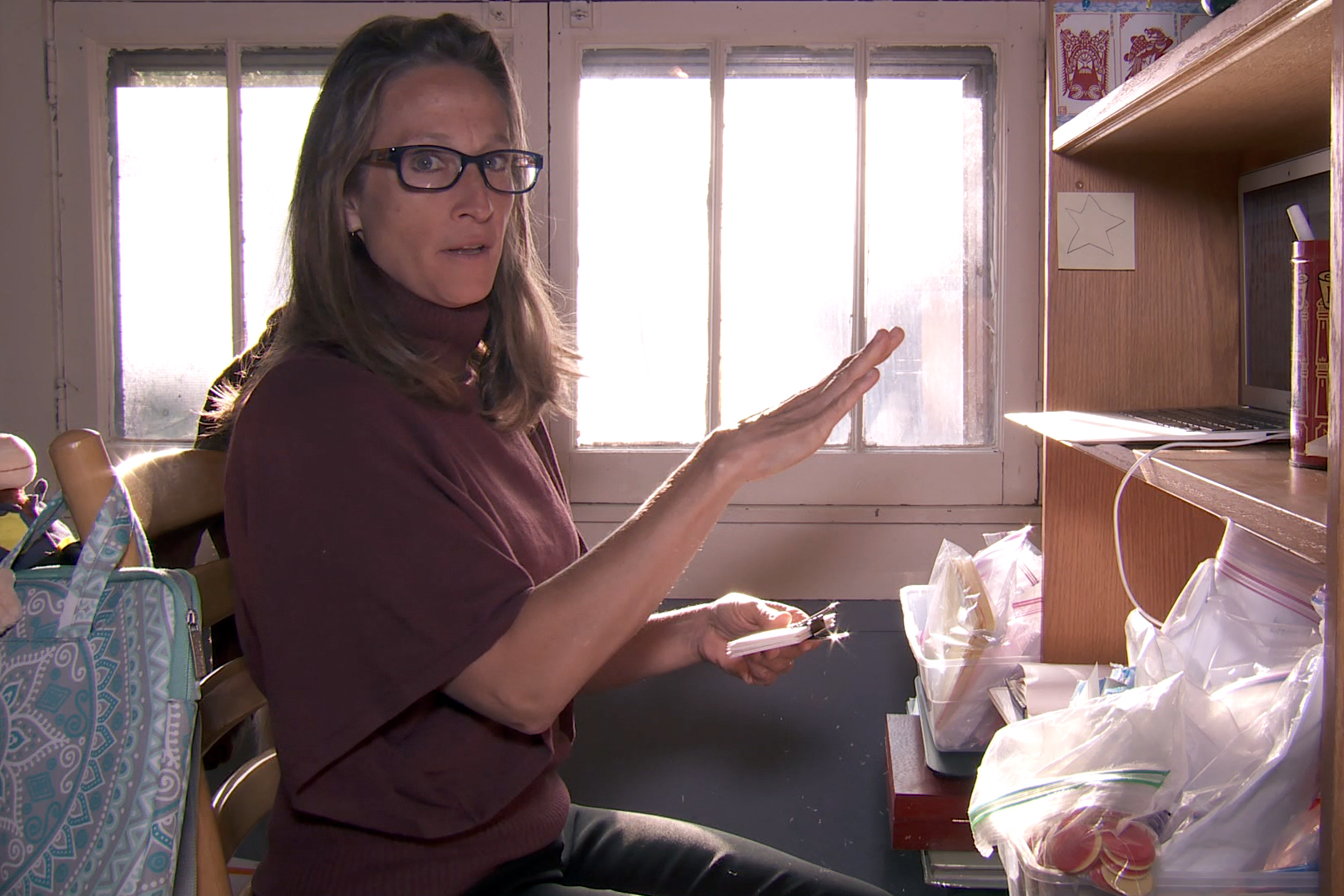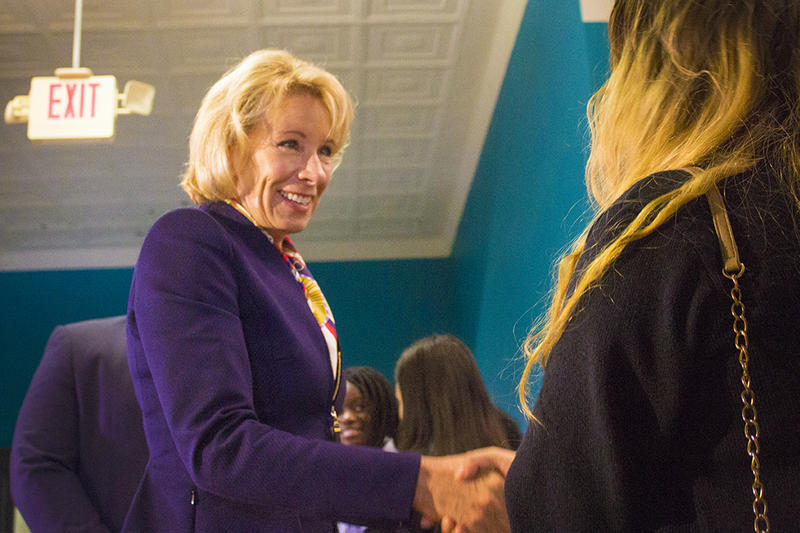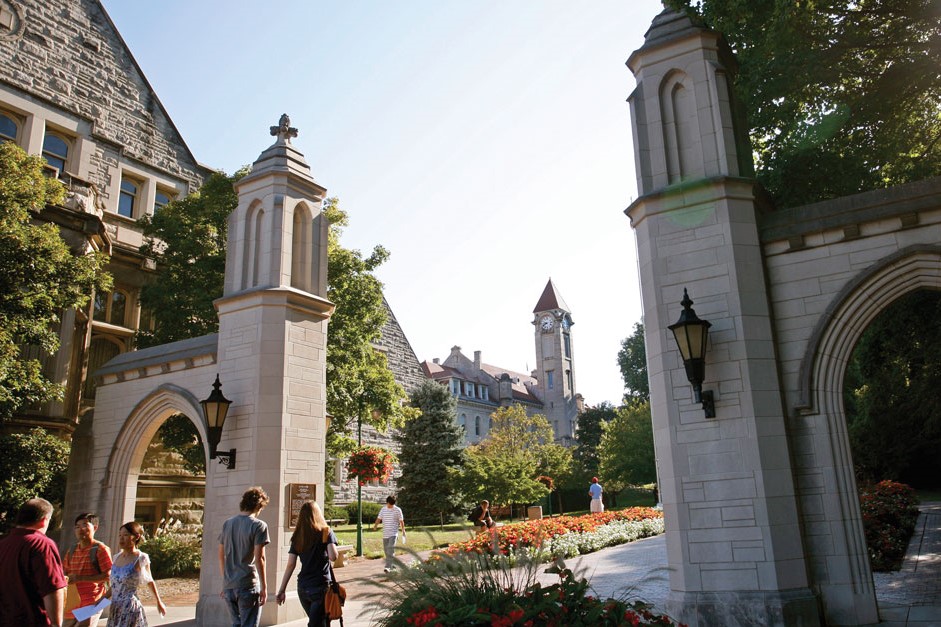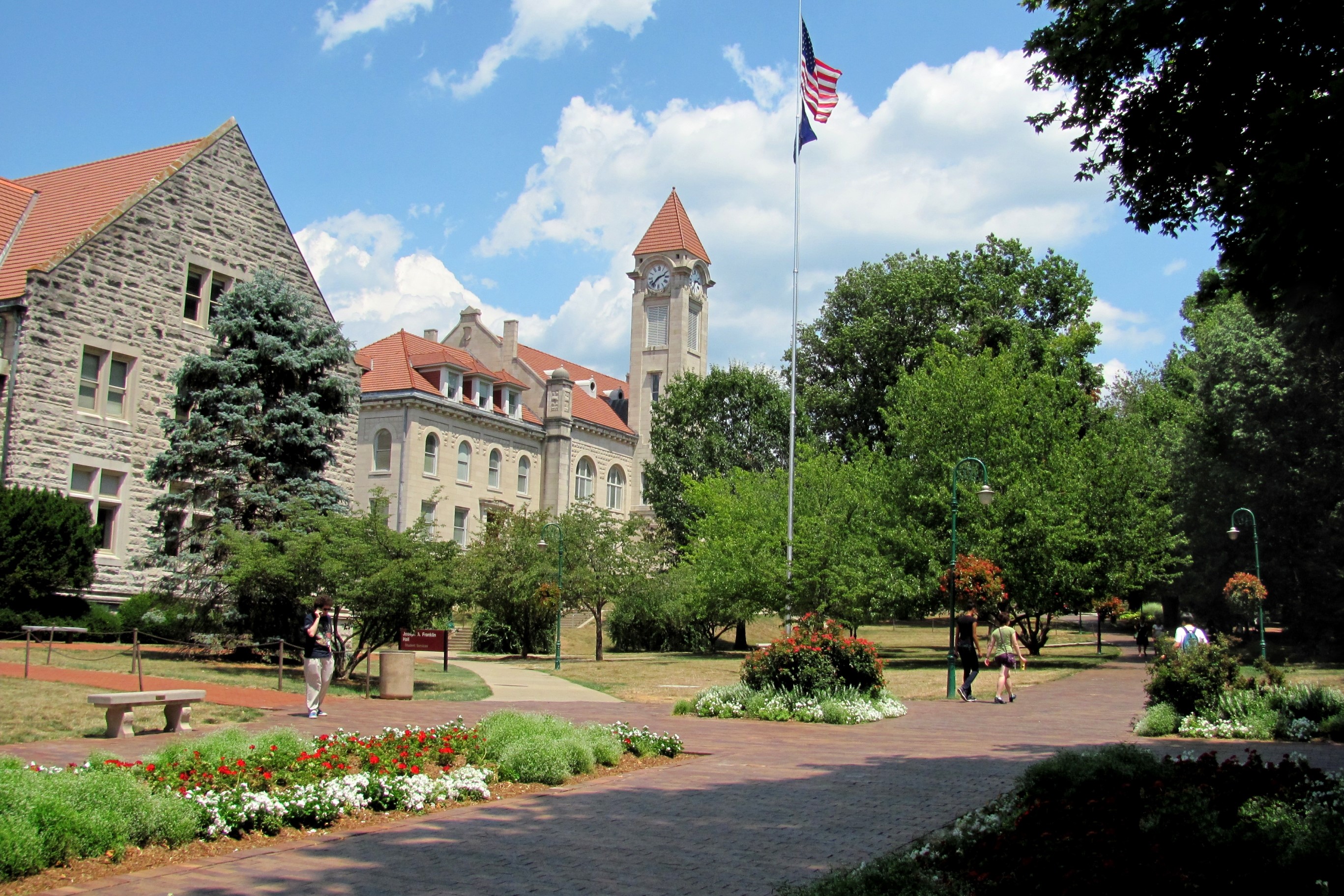
Prior to March, only a quarter of Indiana’s 291 school districts had used any form of e-learning.
For Monroe County School Corporation teacher Jenny Noble-Kuchera, the last two months have been an adjustment, to say the least.
“There are silver linings,” she says. “But if we have to do it, we have to do it. And if we are, I can’t be tired of it in May if I’m going to do it still in August.”
Noble-Kuchera teaches English as a new language at Binford and Rogers elementary schools, where she oversees 91 students.
For the last two months, one of her bookcases acted as a desk while a corner of her attic became her classroom. Each morning, she put her laptop on a shelf, pulled up a chair and started her Zoom lessons around 9 a.m.
“The first week out, participation was really high,” Noble-Kuchera says. “Kids were interested. It was quirky, it was different, it was new. And the second week of e-learning we all saw a kind of a drop, a kind of a dip. I think they just felt tired of doing it the new way.”

The district went with an electronic contingency learning plan and it’s gotten them through the end of the school year. Gov. Eric Holcomb shaved 20 days off the schedule so MCCSC’s last day was Thursday.
Looking ahead to the fall, parents, teachers, students – even assistant superintendent Markay Winston – will tell you the district’s e-learning plan needs some work.
“We had approximately nine, 10 days to pull everything together,” she says. “I would say under those circumstances, we've done remarkably well. Our teachers have gone above and beyond. They've stepped up, they've tried to find creative, flexible, innovative ways to engage our students.”
READ MORE: How Education Leaders Are Talking About Reopening Indiana Schools
This semester, MCCSC’s grades were based on work finished before spring break and couldn’t drop below that level – so if students were already doing well, they didn’t have a ton of incentive to participate.
Noble-Kuchera gauges her students' participation rate at 95 percent, while the other five percent get "bombarded with communication."
"I'm going to email, I'm going to ask my assistant principal to also make a phone call to the parents and say, 'Hey, we haven't seen so and so in a couple of days.' If they're not participating, we still at least just want to make sure they're there, they're alive, their families have food, their families are healthy. And if the kid turns in work, well, that's a bonus."
Winston says she doesn’t have numbers on participation rates for the school district yet. They’ll be available after administrators, teachers and families spend the next couple weeks debriefing over what worked and what didn’t, and what needs to change if schools aren’t open in the fall.
“Ultimately, the direction that we will take will be from the governor, from the state superintendent of public education here in Indiana,” she says. “And then, of course, from our health department. All of that information will be taken into consideration.”
During a virtual webinar with school leaders, state superintendent Jennifer McCormick said guidance the department is working on will include tight health restrictions whenever schools do reopen to students and staff. But for the most part, school districts will be responsible for their own learning plans.

Winston says the academic plan for next year will also be a product of the next couple weeks. And one of the biggest questions will be how to move forward with a group of students who’ve essentially missed a quarter of school.
“Most of them will be ready,” Noble-Kuchera says. “And the ones that aren't, we've done a little bit of detective work to figure out what specific areas they're going to need a little extra skill support in.”
She says teachers will discuss “vertically aligning” their classes – where fourth grade teachers would meet with fifth grade teachers and discuss what they covered well and what might need some work.
“There might be some gaps, and [the teachers] are gonna have to pick that up a little bit at the start of next year,” Noble-Kuchera says. “For some kids who got this skill while learning online, great. It's a little bit of review for them and they can do a sort of accelerated version. For kids who didn't pick up the skill yet, fifth grade teachers are just going to have to pick that up.”
While state leaders discuss how to best reopen schools, local districts will determine the best ways to improve in-class and e-learning. There are still questions about access, though – not every student can get online easily, and many of the online resources teachers were using were made free because of the pandemic.
“What schooling is going to look like in the fall, as of this moment in time? We don't yet know," Winston says. "But we are actively engaged in conversations to begin that planning process.”
The state will decide in July how and when to bring students back to school.
For the latest news and resources about COVID-19, bookmark our Coronavirus In Indiana page here.










